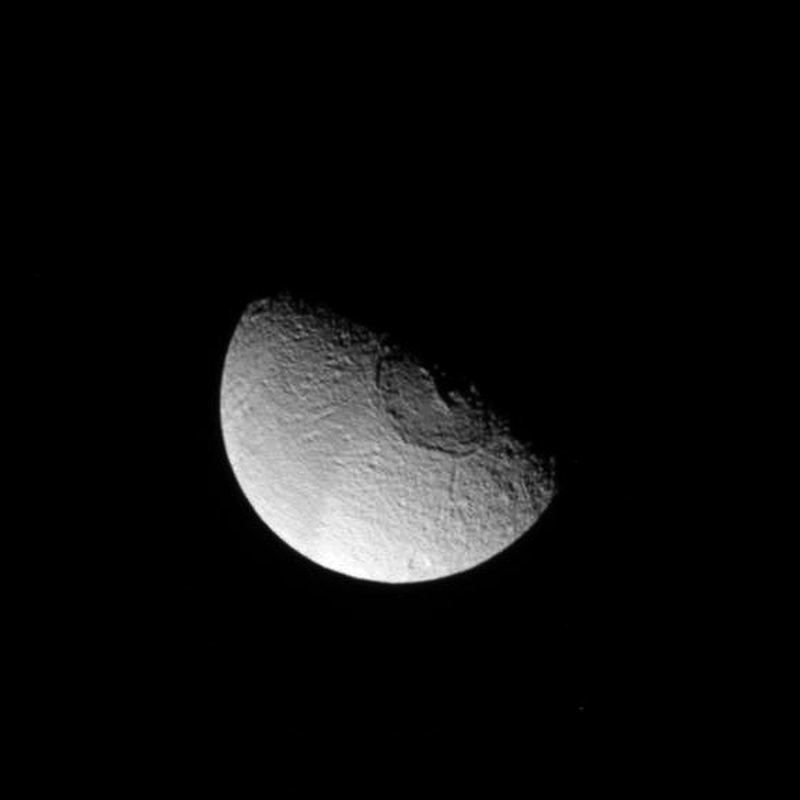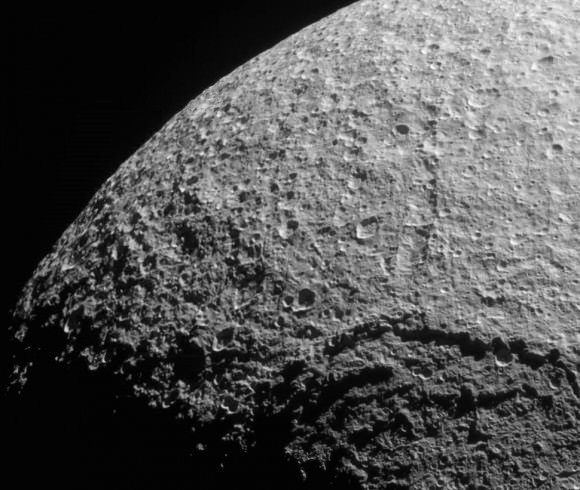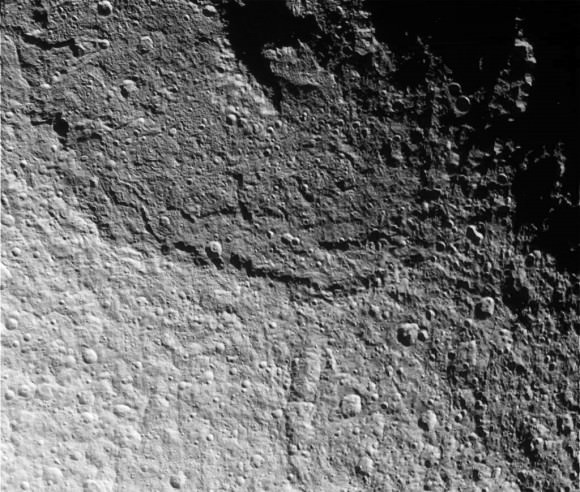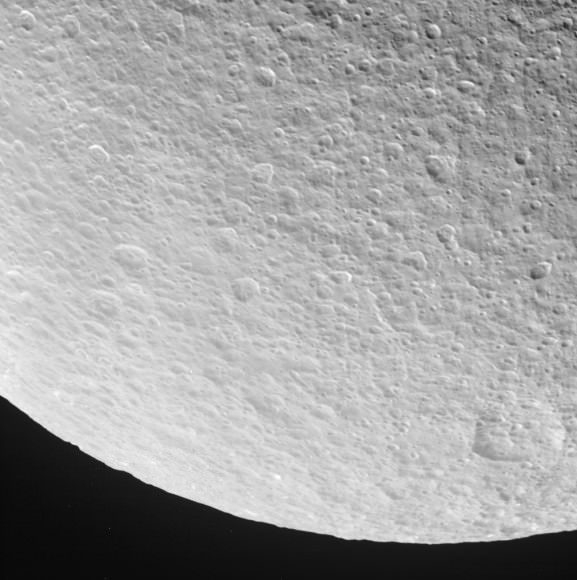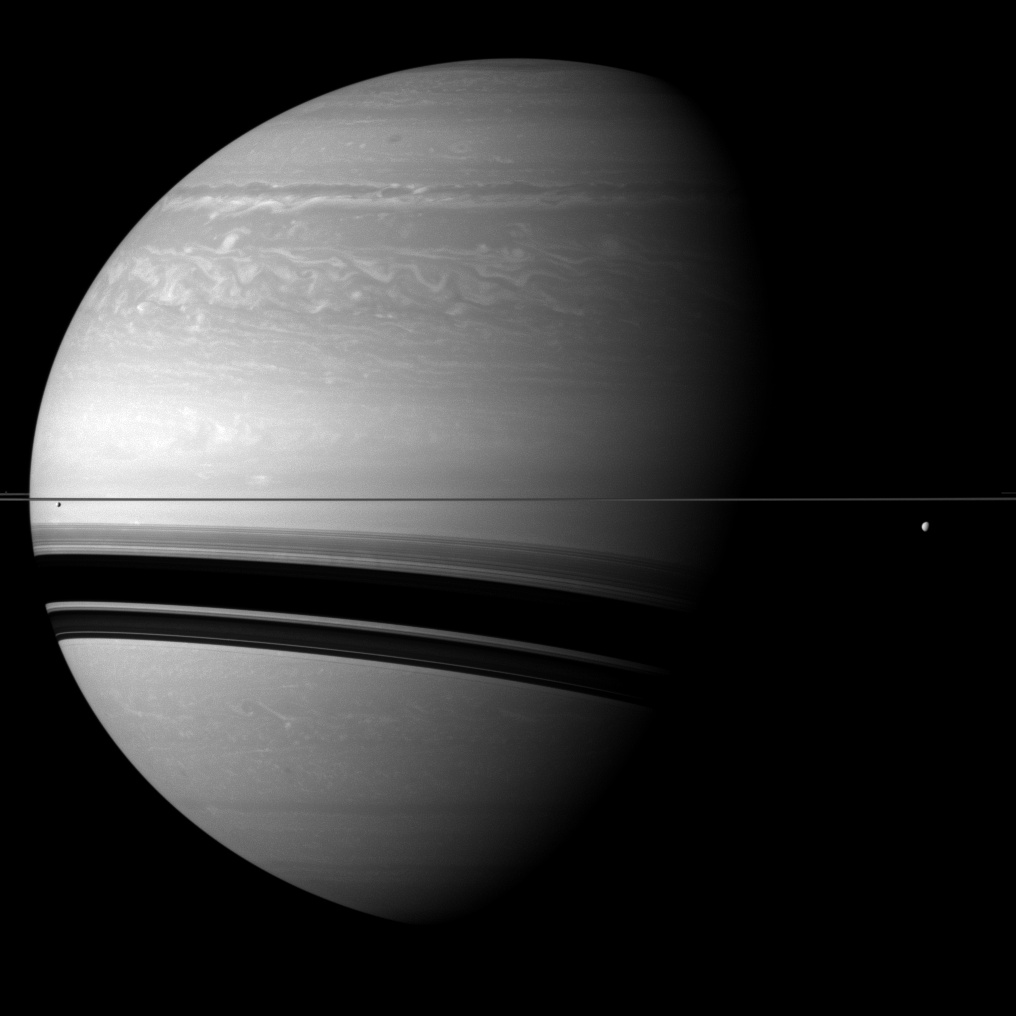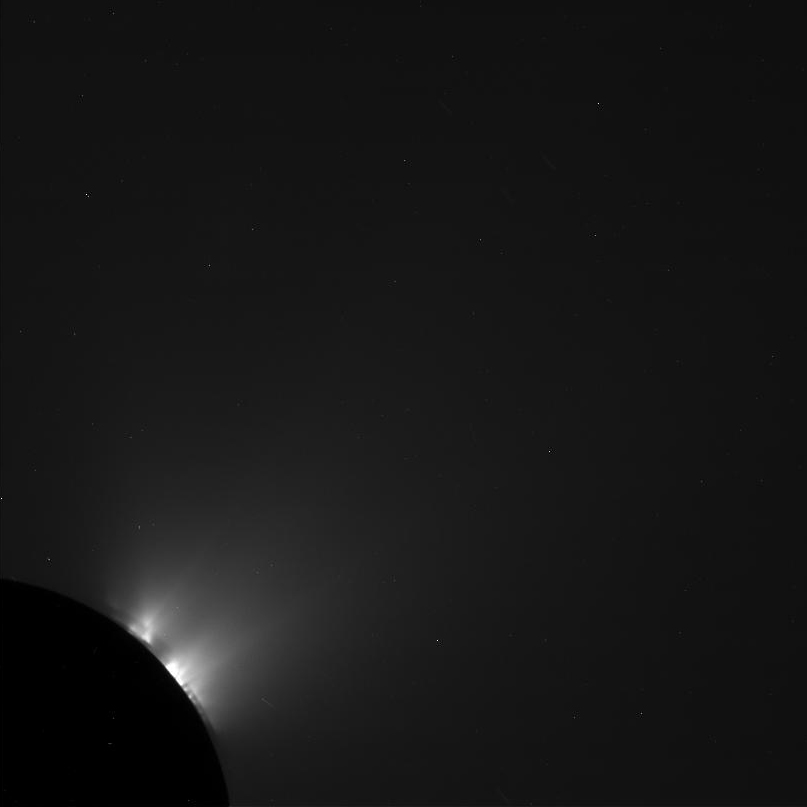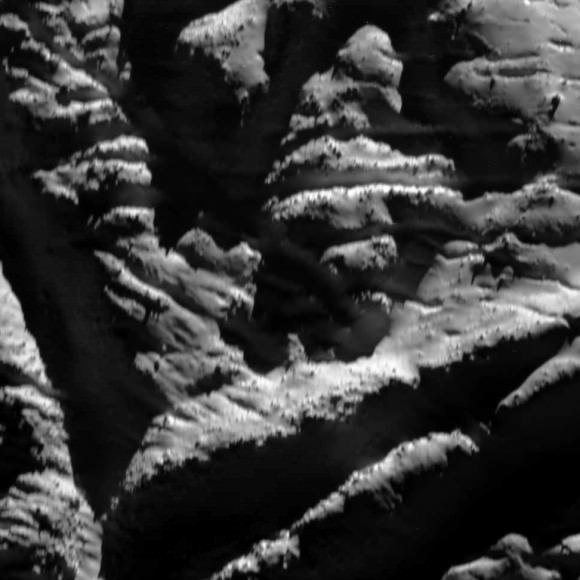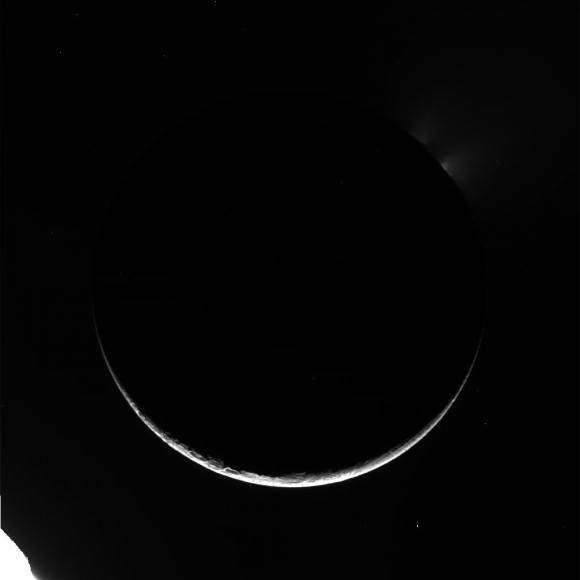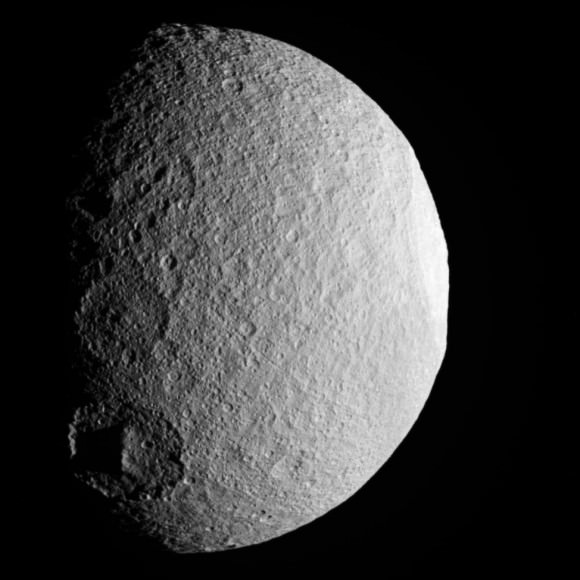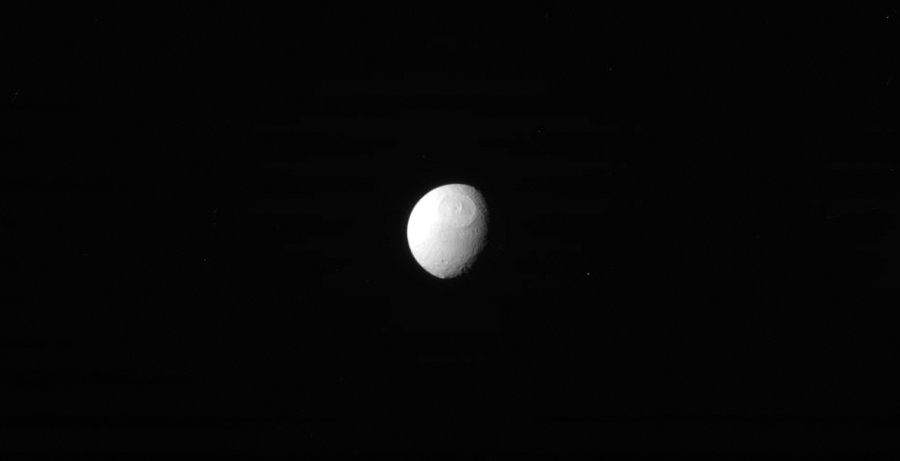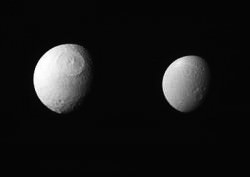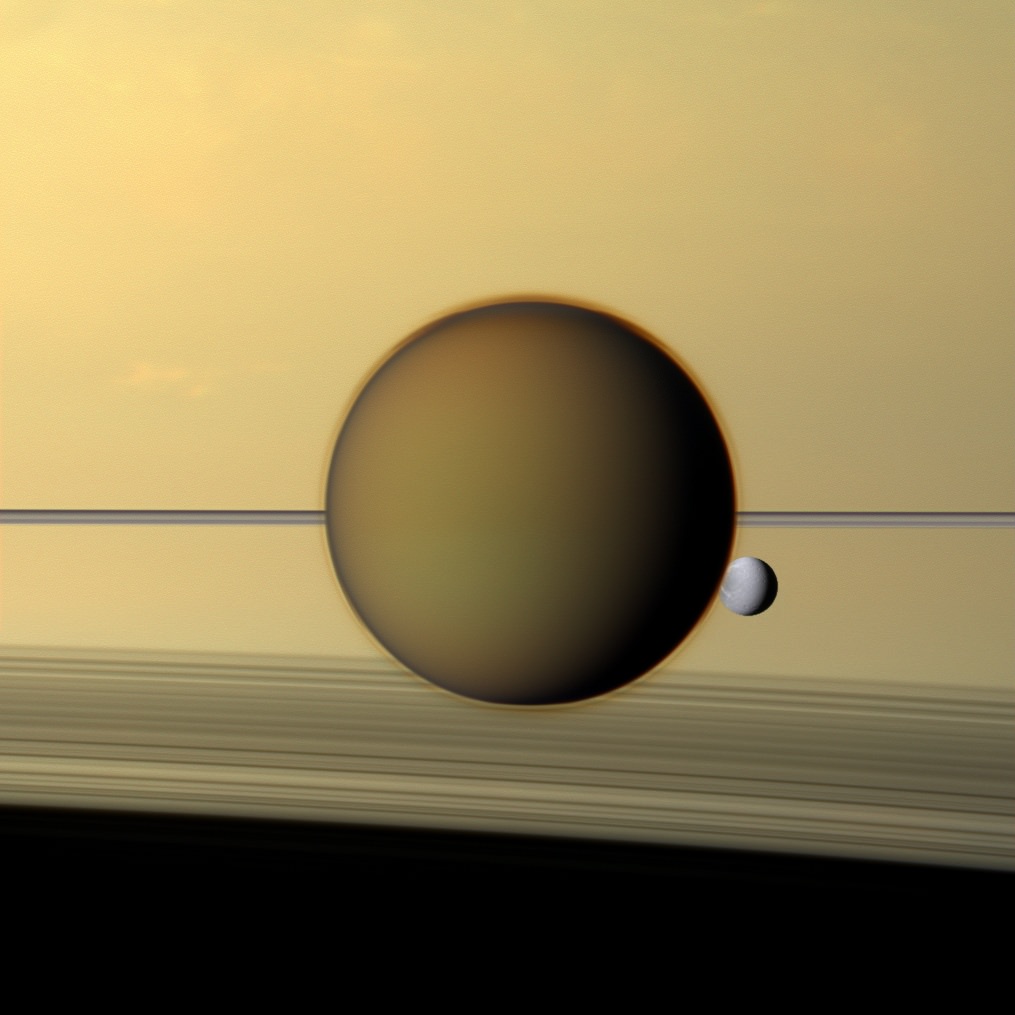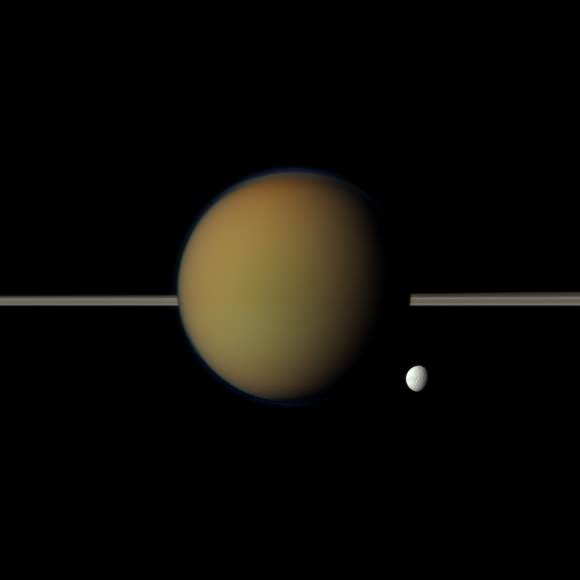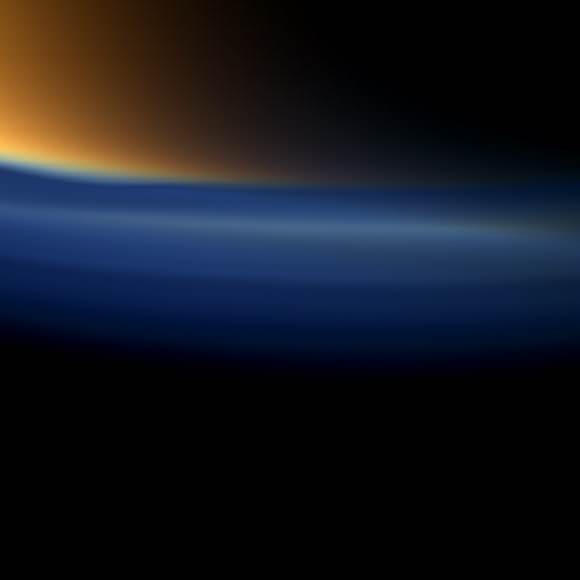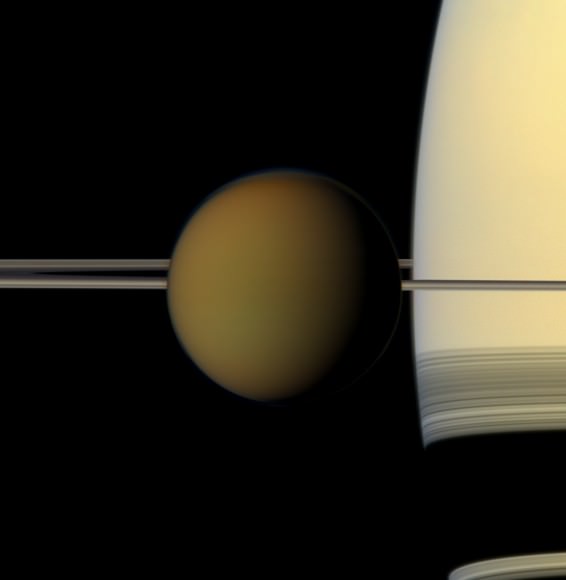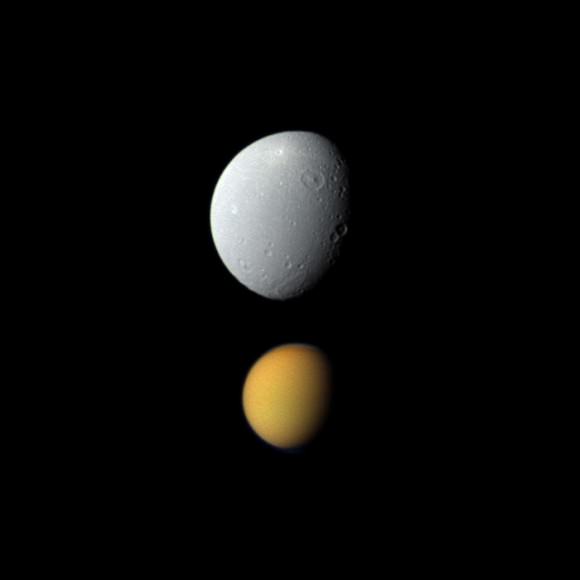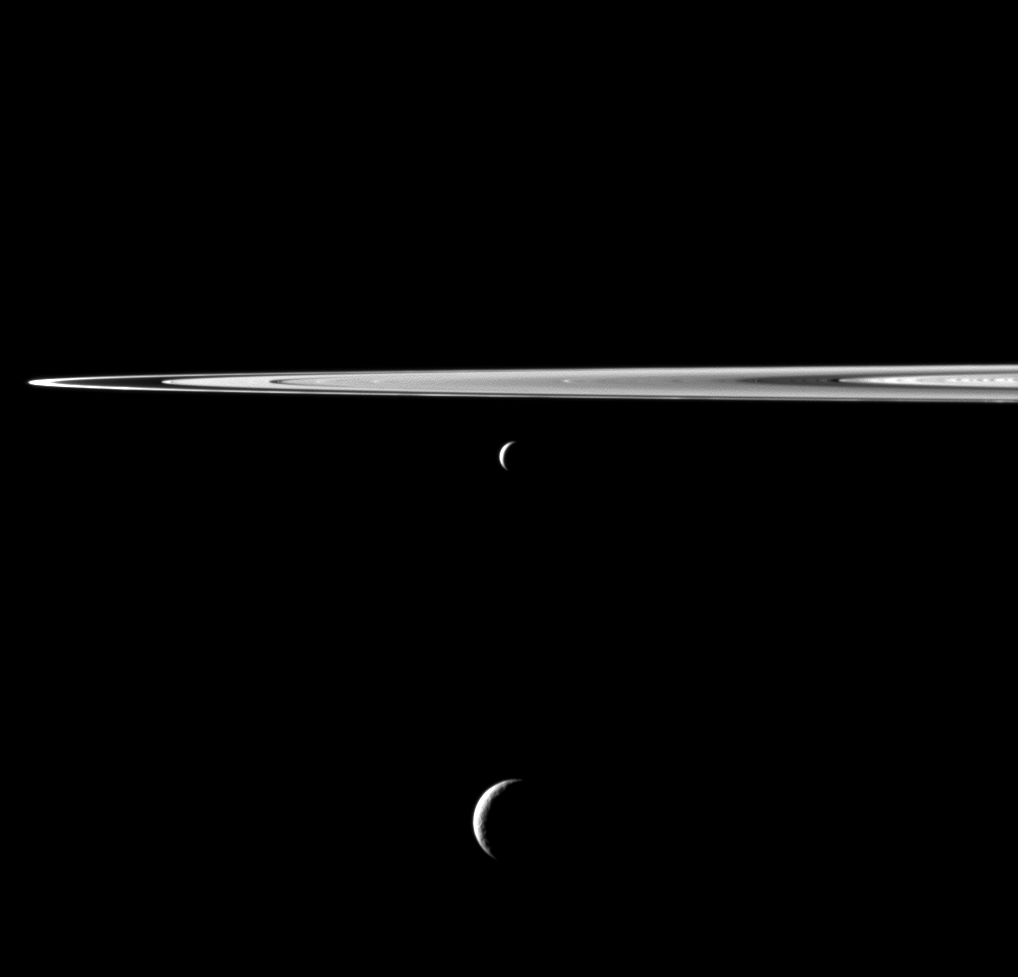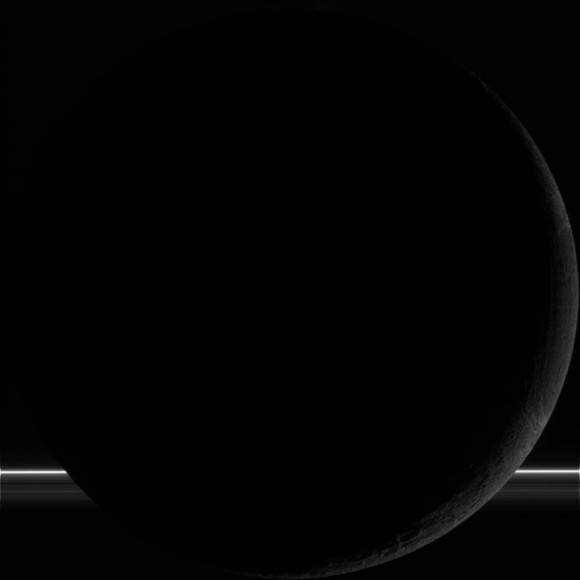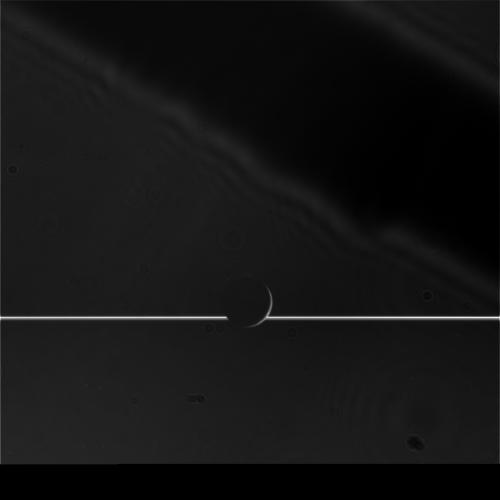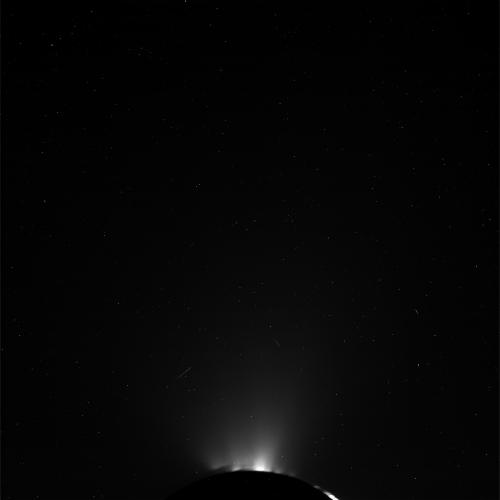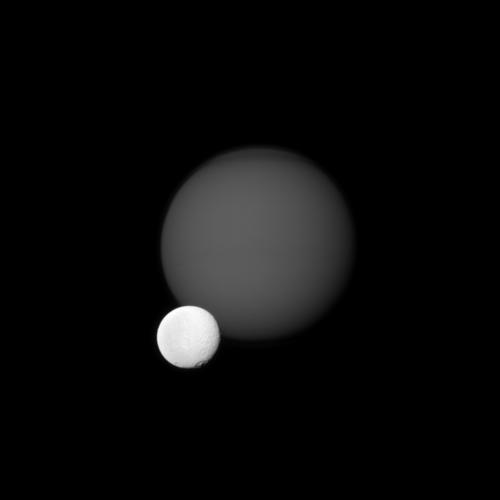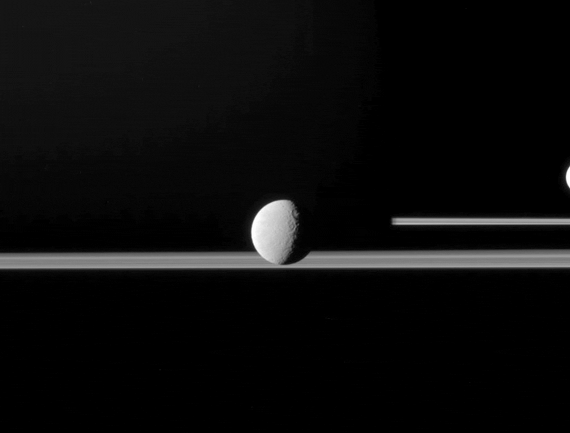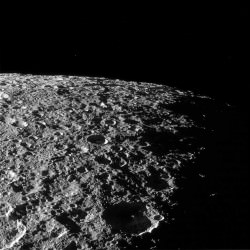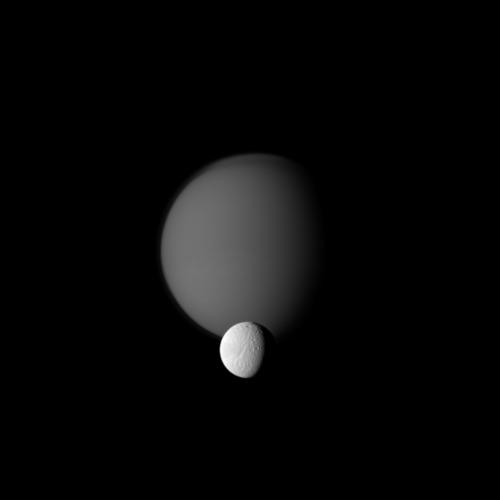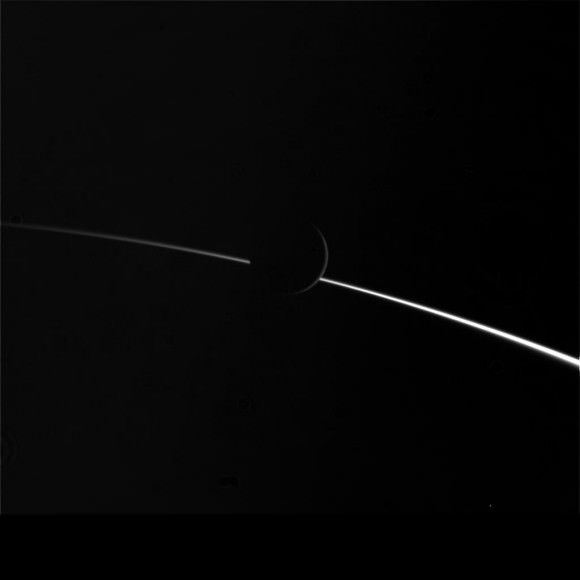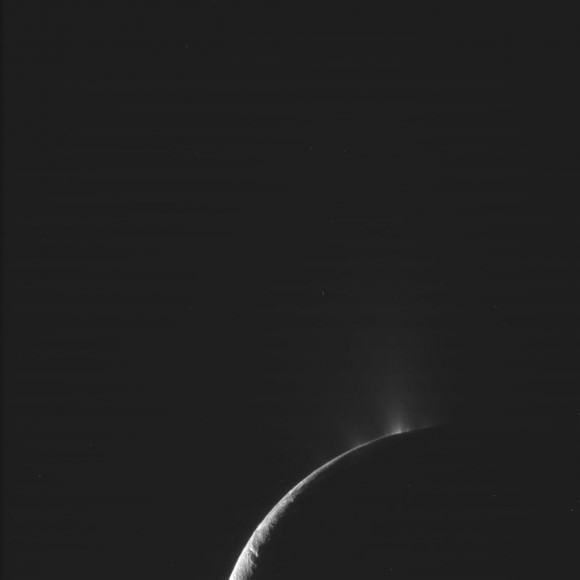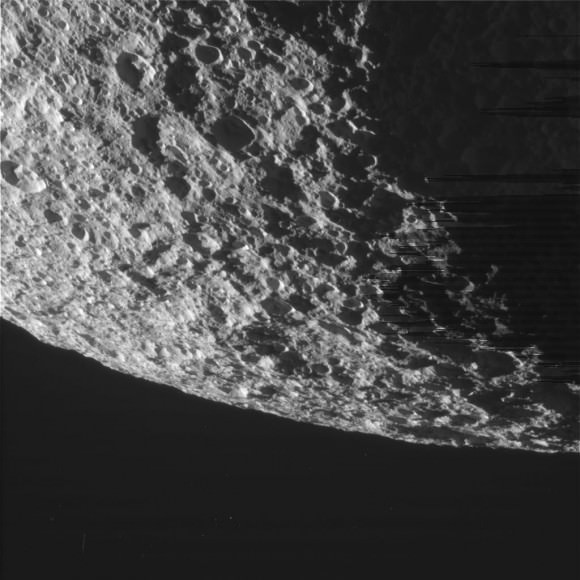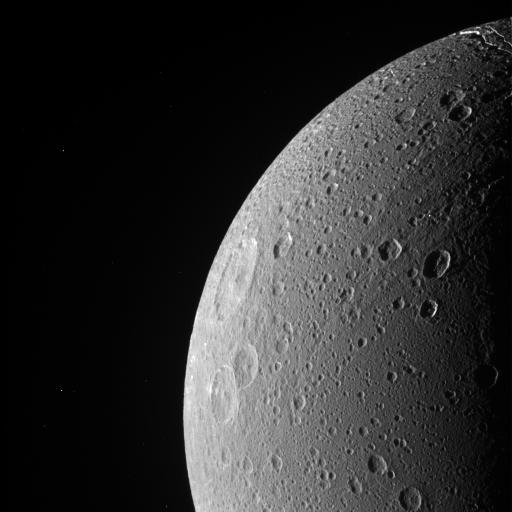On June 28 NASA’s Cassini spacecraft passed by Tethys, a 1,062-kilometer (662-mile) -wide moon of Saturn that’s made almost entirely of ice. Tethys is covered in craters of all sizes but by far the most dramatic of all is the enormous Odysseus crater, which spans an impressive 450 kilometers (280 miles) of the moon’s northern hemisphere — nearly two-fifths of its entire diameter!
In fact, whatever struck Tethys in the distant past probably should have shattered it into pieces… but didn’t.
Tethys likely held itself together because when the impact occurred that formed Odysseus, the moon was still partially molten. It was able to absorb some of the energy of the impact and thus avoid disintegration — although it was left with a quite the battle scar as an eternal reminder.
The images below are raw images from Cassini’s latest pass of Tethys, showing the moon’s rugged terrain and portions of Odysseus from a distance of 68,521 kilometers (42,577 miles).
The central peak of Odysseus has collapsed, leaving a depression — another indication that the moon wasn’t entirely solid at the time of impact.
Tethys orbits Saturn at a distance of 294,660 kilometers (183,100 miles), about 62,000 miles closer than the Moon is from Earth. Such a close proximity to Saturn subjects Tethys to tidal forces, the frictional heating of which likely helped keep it from cooling and solidifying longer than more distant moons. As a result Tethys appears somewhat less cratered than sister moons Rhea and Dione, which still bear the marks of their earliest impacts… although looking at the region south of Odysseus it’s hard to image a more extensively-cratered place.
Tethys is just another reminder of the violent place our solar system can be. Find out more about Tethys on the Cassini mission site here.
Image credits: NASA/JPL/Space Science Institute. Edited by J. Major. Images have not been calibrated or validated, and each has been level-adjusted and sharpened to bring out surface detail, and in some areas deinterlacing was used to remove linear raw image artifacts.

